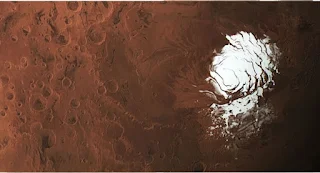Phoenix
Phoenix constellation lies in the southern sky. It was
named after the phoenix, the mythical bird that rises from its own ashes.
The constellation was originally introduced by the
Dutch astronomer and cartographer Petrus Plancius from the observations of the
Dutch navigators Frederick Houtman and Pieter Dirkszoon Keyser in the late 16th
century. It is a relatively small constellation, but it is the largest among
the 12 constellations created and named by Plancius. It was first depicted on
his globe in 1598 and later appeared in Johann Bayer’s atlas Uranometria in
1603.
Phoenix constellation is easy to see for anyone in
Australia and South Africa during southern hemisphere summer, but generally
can’t be observed by anyone living north of the 40th parallel, and lies pretty
low in the sky for observers north of the equator.
Phoenix contains several notable deep sky objects,
among them the Phoenix Cluster of galaxies, the black hole candidate HLX-1, and
Robert’s Quartet, a compact galaxy group.
Phoenix is the 37th constellation in size, occupying
an area of 469 square degrees. It is located in the first quadrant of the
southern hemisphere (SQ1) and can be seen at latitudes between +32° and -80°.
The neighboring constellations are Eridanus, Grus, Fornax, Hydrus, Sculptor and
Tucana.
Phoenix belongs to the Johann Bayer family of
constellations, along with Apus, Chamaeleon, Dorado, Grus, Hydrus, Indus,
Musca, Pavo, Tucana and Volans.
Phoenix contains five stars with known planets and
does not have any Messier objects. The brightest star in the constellation is
Ankaa (Alpha Phoenicis) with an apparent magnitude of 2.40. There is one meteor
shower associated with the constellation -the Phoenicids-which occurs around
December 5 every year
French explorer and astronomer Nicolas Louise de
Lacatle charted and designated 27 starts with the Bayer designation Alpha
through to omega in 1756, of these he labelled two stars close together lambda
and assigned omicron, psi and omega to three stars.
MAJOR STARS IN PHOENIX
1. Ankaa – α Phoenicis (Alpha Phoenicis)
2. β Phoenicis (Beta Phoenicis)
3. γ Phoenicis (Gamma Phoenicis)
4. κ Phoenicis (Kappa Phoenicis)
5. ζ Phoenicis (Zeta Phoenicis)
6. ν Phoenicis (Nu Phoenicis)
7. SX Phoenicis
Brightest star - Ankaa or Alpha Phoenicis
Ankaa is the brightest star in the constellation. Its
name comes from the Arabic al- ‘anqā’, which means “the phoenix.” It is also
sometimes known as Nair al- Zaurak, or “the bright star of the skiff” (an-na’ir
az-zawraq in Arabic).
Alpha Phoenicis is a spectroscopic binary star
approximately 85 light years distant. The system has the combined stellar
classification K0.5 IIIband a combined apparent magnitude of 2.377. The two
components in the system orbit each other with a period of 3848.8 days (or 10.5
years). The primary star, as the spectral class indicates, is an orange giant.












